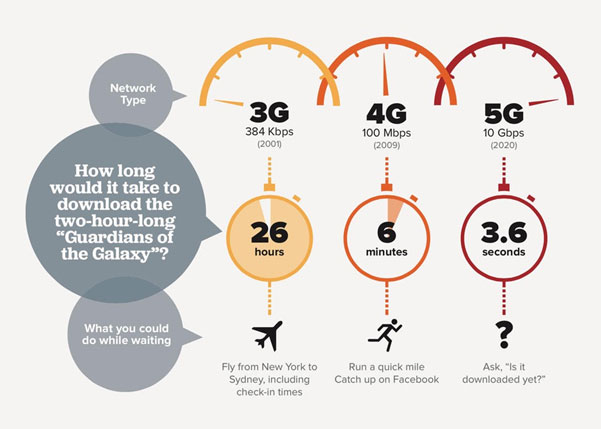
The 2015 State of Broadband report produced by the UN Broadband Commission revealed 57 percent of the world’s people remain offline – unable to take advantage of the enormous economic and social benefits the internet offers.
For these billions of people across the globe, wireless connection via a mobile device is their best chance to one day access the internet and enjoy the same broadband experience we already do in developed nations.
Signal processing lies at the heart of many of the innovations that lead to the development of wireless networks and the smartphones many of us take for granted. And it’s up to us to find new innovations to overcome the infrastructure and cost challenges to make wireless connectivity a reality in every corner of the world.
It's the Data
Cellular networks were originally designed to support voice calls by large numbers of people on the move. The available bandwidth was so limited and the wireless links so unreliable that the idea of supporting “high speed” data transmission would have seemed far-fetched.
A few decades later we are in the midst of an amazing revolution in cellular data communications – but emerging and underdeveloped regions aren’t yet benefiting from high-speed internet access.
Here are some figures and predictions to put things in perspective:
- Mobile data traffic has grown 4,000-fold over the past 10 years and almost 400-million-fold over the past 15 years
- Global mobile devices and connections in 2015 grew to 7.9 billion
- Global mobile data traffic will increase nearly 8-fold between 2015 and 2020
- 75 percent of the world’s mobile data traffic will be video by 2020
- Mobile network connection speeds will increase more than threefold by 2020
Behind the scenes, signal processing is powering the wireless revolution in many ways.
Faster
Moore's Law has allowed us to apply signal processing concepts that were previously considered technically or commercially unfeasible. Powerful and inexpensive microprocessors enable advanced wireless transmission techniques like massive multiple-input multiple-output (MIMO) to be used in the both the base station and the mobile chipsets.
These kinds of techniques are helping increase in wireless speed and capacity without requiring any increase in spectrum, which is the most expensive and scarce resource in any wireless network.
Smaller
The signal processing contributions are not just at the network transmission level. Compression algorithms developed by signal processing experts have reduced digital file sizes dramatically, making it possible to stream HD movies to your phone. And the algorithms are capable of dynamically adjusting the video quality to handle changing network conditions, providing a usable service even while travelling on a high-speed train or at the edge of coverage.

Disruption
Wireless technology R&D is expensive. Traditionally only large companies have pockets deep enough sustain the multiyear investments required to bring new technology to mass market.
However, the future of the wireless revolution might not be dictated by the large industry players. Nontraditional players and new technologies are changing the dynamics by making R&D cheaper while also lowering other barriers to entry.
- New Players
Facebook is looking to shake up the status quo through the open source OpenCellular platform. - Cheaper Technology
Over the last few years the industry has been using devices like Software Defined Radios (SDRs) to shift more of the signal processing from hardware components to software code.
SDRs, like the open source HackRF, have become cheap enough that hobbyists and engineers can now develop their own wireless networks and products using off-the- shelf components and share their code freely online using platforms like Github.
The Future
Signal processing research in wireless communications is being unleashed and discovered by a global community. Coupled with low-cost manufacturing and crowdsourcing, we may soon see new and innovative technologies reaching mass markets much faster than ever before.
The technological advances needed to bring wireless broadband to the billions of people that are missing out might be closer than we’ve hoped. All the tools needed to make that happen are available. What we choose to do with them could change the world.
ABOUT THE AUTHOR
Ramanan Thiyagarajan is an IEEE Signal Processing Society member and National Performance & Optimisation Manager at Telstra. Currently based in Melbourne, Australia, Ramanan graduated from the University of Canterbury NZ with a degree in Electrical & Electronics Engineering (Hons) and holds a graduate diploma in Management from University of London (lead college LSE). Connect with Ramanan on LinkedIn and Twitter.
References:
Infographic: http://www.cnet.com/news/how-5g-will-push-a-supercharged-network-to-your-phone-home-and-car/.
